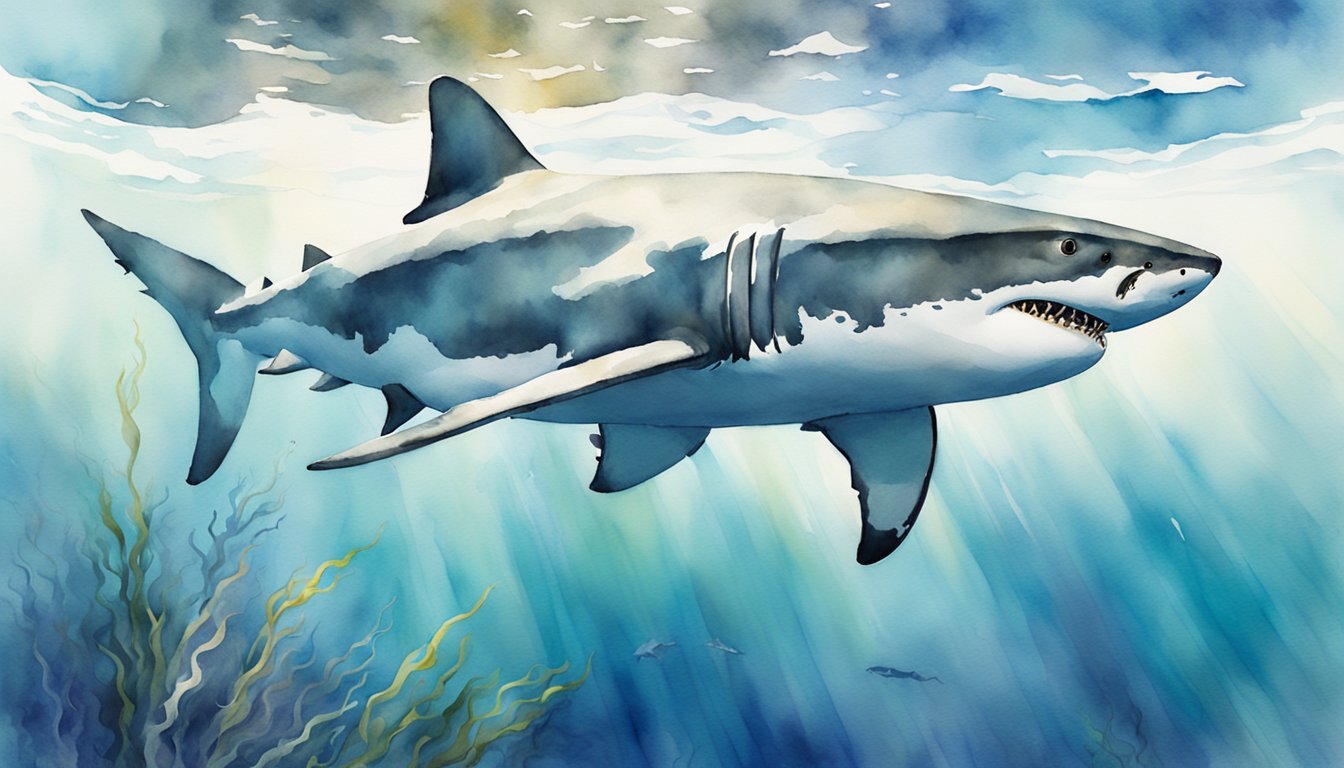Understanding Great White Shark Behavior
Great white sharks are often misunderstood creatures. This section aims to demystify their behavior, focusing on their diet, the reality of shark attacks, and their crucial role in oceanic health.
Diet and Natural Prey
Great white sharks have a preference for high-fat prey, such as seals and sea lions, which provide them with the energy necessary for their active lifestyle. As apex predators, they play a vital role in controlling the populations of these marine mammals. Research indicates that their diet mainly consists of various fish and marine mammals, which can sometimes lead them into conflict with humans when mistaken identity occurs.
Shark Attacks: Facts Versus Myths
Contrary to popular belief, humans are not preferred prey for great white sharks. Most shark attacks are a result of curiosity or mistaken identity, not predation. The scientific evidence shows that great white sharks exhibit opportunistic tendencies, but humans do not typically fall within their dietary preferences. Incidents are rare, and fatalities even rarer, as depicted in a recent study confirming that great whites have almost no interest in eating humans.
The Role of Great White Sharks in Marine Ecosystems
As apex predators, great white sharks exert a top-down influence in the marine ecosystem. They are vital for maintaining the species diversity and health of marine ecosystems by preying on the sick and weaker individuals of other species, preventing any single prey population from exploding and destabilizing the food web. Their presence ensures a balanced ocean environment, showcasing how nature delicately manages its intricate network of life.
Human Interactions With Great White Sharks

Understanding how great white sharks interact with humans is essential to mitigating risks and enhancing conservation efforts. These interactions, varying from curious encounters to rare instances of shark bites, have significant implications for both shark and human safety.
Patterns of Shark Attacks on Humans
Patterns in shark attacks on humans show that while they are relatively rare, certain activities and geographical areas have higher incidences. Surfers and swimmers are often involved in unprovoked shark attacks, primarily in regions with rich marine life such as Australia, South Africa, and the United States. Great white sharks, sometimes mistaking humans for seals or fish due to the phenomenon of mistaken identity, tend to attack from below. Although juvenile great white sharks are responsible for many of these interactions, they typically do not result in fatalities.
- Unprovoked Attacks: Often occur in the shark’s natural habitat where humans inadvertently enter.
- Provoked Attacks: These include instances where humans touch or harass sharks.
- Misidentification: The mistaken identity theory explains some attacks as visual mistakes by the sharks.
- Hotspots: High incidences of shark interactions are noted in coastal regions like Australia, South Africa, and the United States.
Shark Conservation and Public Safety Measures
Shark conservation is a key aspect of ensuring public safety during water activities in oceans where sharks are present. Researchers recommend implementing measures that both protect sharks and humans. Innovative non-lethal methods such as shark barriers and tagging for monitoring shark movements are in place to reduce the likelihood of shark bites. Data from the International Shark Attack File helps identify trends and influence safety guidelines.
-
Preventive Measures:
- Shark nets and drum lines
- Beach patrols and aerial surveillance
- Public education about risk-reducing behaviors
-
Research Efforts:
- Tracking and tagging programs
- Studying shark behavior and biology
- Collaboration between international research teams for data sharing
By prioritizing understanding and respect for these apex predators, humans can coexist more safely with great white sharks while preserving marine ecosystems.

